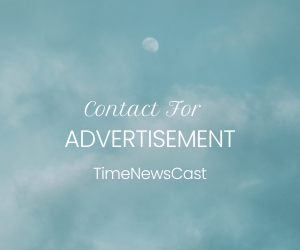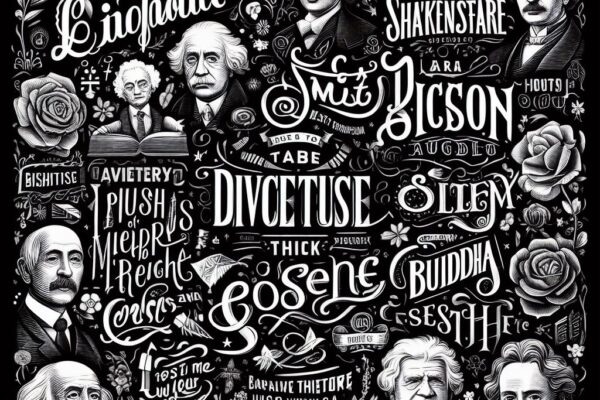The public looked down on Michaela Kennedy-Cuomo, the daughter of former New York mayor Andrew Cuomo, earlier this year. Many made fun of her demisexuality, which is defined as a lack of sexual attraction to others unless there is also an emotional connection. However, few people have actually admitted that demisexuality exists.
But demisexuality is a real sexual orientation that affects people everywhere, even though it doesn’t get much attention.
Demisexuality, which is part of the asexuality spectrum, is not the same as wanting to wait for a deep bond to form before having sex with someone; rather, it is more like the experience of being asexual until that type of connection forms, at which point the sexual attraction extends only to that person. Waiting to have sex until you form a deep connection is more of a preference than a necessity for developing sexual desire for allosexuals (people who are not on the asexual spectrum).
Demisexual podcast co-creator Kayla Kaszyca, who, along with her asexual, aromantic co-host Sarah Costello, hosts the show Sounds Fake But Okay, says that Cuomo’s Kennedy announcement did have positive effects. According to Kaszyca, “more discourse about it” was sparked by Cuomo’s statement because it brought demisexuality into the spotlight.
However, the increased exposure also attracted naysayers and helped spread false information. I think the word [demisexuality] is definitely more out there and known, but the proper definition might still be unclear to a lot of people,” says 24-year-old Kaszyca.
Many people, for example, still don’t take demisexuality seriously, claiming it’s “normal” to wait to feel sexually attracted to someone until you develop more of an emotional connection with them. The question “Isn’t everyone like that?” may be posed to you.
“You have to start myth-busting,” Kaszyca advises.
Demisexual people like Kaszyca and those who discuss their orientation online are working to define themselves more precisely. Defining an orientation that hasn’t even had a name for very long and whose meaning is often muddled makes this an especially difficult task.
But their efforts are paying off, and over the past few years, discussions about demisexuality have exploded across social media platforms such as Facebook groups, Instagram posts, Discord servers, and international asexual spectrum organizations.
Someone might tell you, “Isn’t everyone like that?” You have to start myth-busting – Kayla Kaszyca
‘I still didn’t come to terms with it for a really long time’
The first documented use of the term “demisexual” was in a forum post on the Asexual Visibility & Education Network (Aven) website in 2006.
Human-sexuality researcher and professor at Brock University in Ontario, Canada, Anthony Bogaert, who has written multiple papers about asexuality, believes that the term “asexual” originated on the Aven site and among asexual advocates rather than in the academic community. People on the Aven site were just beginning to understand the breadth of the asexual spectrum, and new terms were emerging as formerly asexual people began to recognize the variety of contexts in which they could experience sexual attraction.
The Aven site has a history of welcoming visitors with a wide range of identities, as stated by Bogaert. These individuals advanced the conversation about asexuality by defining its many facets. As a result, they provided details that couldn’t be found anywhere else on the web.
On the other hand, asexuality has always been and continues to be more openly discussed than demisexuality. The former is more readily understood by those who don’t identify as asexual. A person who is asexual “experiences little or no sexual attraction,” as put forth by Kaszyca. “It’s a simple slogan to employ.” For allosexuals, the tacked-on qualifier “except when they develop a deep emotional connection” can be confusing.
A few years ago, after discussing their sexuality with a friend, 28-year-old Indiana native Elle Rose began identifying as demisexual. According to Rose, “she looked at me and was like, ‘Elle, you’re describing demisexuality. A long time passed before “I finally accepted it.” Rose frequently used the term “pansexual” to describe their sexual orientation, leaving out the demisexual identity they identified with out of fear for the complications coming from being openly demisexual.
‘People can see themselves represented, finally’
To some extent, Rose believes that “purity culture,” in which women are both highly sexualized in the media and expected to save themselves for the right person, is to blame for the negative reception demisexuals face in the United States (or marriage, particularly in religious settings). With this idea in mind, it makes sense to wait to have sexual relations until a strong connection has been established with a partner. Still, this is a matter of personal taste, and demisexuals don’t necessarily subscribe to this orientation.
Because of this communication breakdown, many people feel isolated. Cairo Kennedy, now 33 and from Saskatchewan, Canada, recalls that she “didn’t experience sexual attraction the same way as my peers, and you kind of feel broken” as a result. As the saying goes, “It became this huge secret and source of shame.”
It was only in recent years that she learned her sexual orientation had a name, and while that was “kind of good,” she says there was “no information” available, at least not from the perspective of someone who identified as demisexual. There were enough Aven posts for her to recognize herself in them, but not so many that she felt overwhelmed by the sense that “there’s a whole bunch of us.”
[My friend] looked at me and was like, ‘Elle, you’re describing demisexuality’. I still didn’t come to terms with it for a really long time – Elle Rose
As a result, Kennedy created the “demisexual lifestyle” blog to address this need. Many other demisexuals, ranging in age from teenagers to their 50s and residing primarily in the United States and Europe, have gotten in touch with her thanks to it. “I was really shocked at how many people seem to relate,” she says.
Human sexuality therapist Janet Brito, based in Hawaii, thinks the rise in the term’s popularity can be attributed to the Internet. Even though the term demisexuality describes a sexual orientation that has been around for a long time, she didn’t learn about it until 2014, when she was a postdoctoral student at the University of Minnesota in the United States. Brito says demisexuality affects people of all ages, but she has found that most of her out-and-proud demisexual clients are in their early twenties. She explains that this is because “they have more exposure to social media,” a venue “[where] it is more acceptable to talk about this spectrum.”
With that kind of publicity comes credence. She goes on to say that “many other voices” are now accessible to us thanks to the rise of social media. As the author puts it, “[People] can see themselves represented, at long last.”
Klaus Roberts, a 30-year-old man from a suburb of Helsinki named just outside the city, attributes his coming out to the internet about five years ago. We’re a small country, so Finland lags behind in a lot of these areas, he says. He had previously identified as asexual, but after engaging with members of global LGBTQ+ online communities, he came to accept his true identity as a demisexual. That’s why I always try to use that terminology; it helps the people who know what I’m talking about the most.
‘Understand the nature of sexuality better’
When traditional sources of information about sexual orientation are lacking, the importance of these online conversations cannot be overstated for the purpose of education.
Initially, only friends of Kaszyca and co-host Sarah Costello listened to their podcast when it first began when they were both undergraduates at the University of Michigan in the United States. Their influence has grown to include other English-speaking nations and Europe. On average, Sounds Fake But Okay now has about 7,000 listeners per week, according to Kaszyca’s calculations. She goes on to say that not only people on the asexual spectrum watch the show, but also their parents, partners, and friends for educational purposes.
According to Kaszyca, “Asexuality 101” is the podcast’s most popular episode. After coming out, “people have said they have sent that to friends or family to help educate them and… ease the education process.”
Demisexuals benefit from this education in other areas of life as well, such as dating. Kaszyca claims that being able to be open about one’s sexual orientation in a dating app profile has made demisexual dating easier. In this way, you can avoid the awkward silence that often follows a serious first date discussion. “A first date is supposed to be casual,” she says. “Then you’re like, ‘hey, let’s have an in-depth conversation about my identity, and I’m probably going to have to teach you what it is because demisexuality is so unknown.’”
Avoiding the alienation of sexual minorities requires open dialogue and education about “the variability that exists in the broader asexual community,” as scholar Bogaert puts it. Also, “it allows us to understand the nature of sexuality better,” so it’s important for that reason alone.
Source: demisexuality






